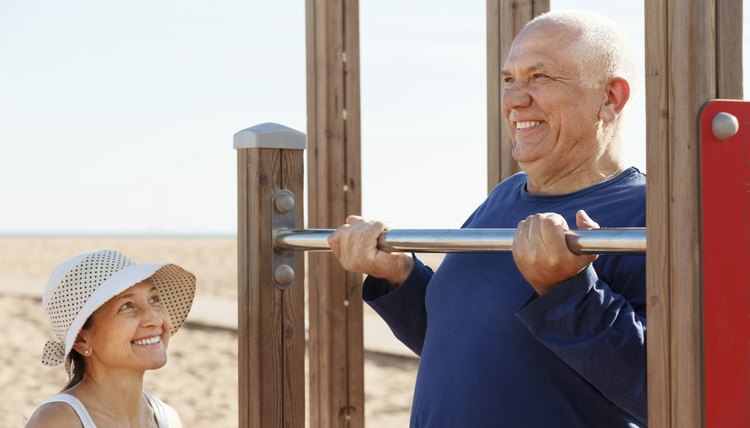What does fact checked mean?
At SportsRec, we strive to deliver objective content that is accurate and up-to-date. Our team periodically reviews articles in order to ensure content quality. The sources cited below consist of evidence from peer-reviewed journals, prominent medical organizations, academic associations, and government data.
The information contained on this site is for informational purposes only, and should not be used as a substitute for the advice of a professional health care provider. Please check with the appropriate physician regarding health questions and concerns. Although we strive to deliver accurate and up-to-date information, no guarantee to that effect is made.
Are Pullups Bad for Shoulders?

As one of the most difficult body-weight exercises, pullups can help strengthen and tone your back, arms and shoulders. Yet improper form can strain your shoulders, injuring them as quickly as it takes to do one repetition. Simply being aware of your form and technique will keep your shoulders in a safe state to effectively perform pullup after pullup.
Form
Pullups have many variations, but the traditional form is with an overhand grip with your hands positioned roughly shoulder-distance apart. Start with your arms straight and pull yourself up to the bar. Ideally, at the top of the exercise, your chest should nearly touch the bar and your chin should be above it. While pulling yourself up, focus on keeping your body straight and avoid arching your back or swinging your legs. Your legs can either be bent with your knees crossed behind you or straight so long as they don't touch the ground.
Muscular Involvement
Pullups can strengthen your back. The primary muscle targeted in a traditional pullup is the latissimus dorsi, which is the widest and most powerful muscle of your back. In addition to the lat muscle, your posterior deltoid, rhomboids, trapezius, biceps and triceps also work together to help perform the movement.
Benefits
Pullups will build muscle in your back, shoulders and arms, improving your overall performance in the gym as well as in any sport you play. The movement also carries over into daily life. By strengthening your pulling muscles, you are also improving your pressing capabilities, according to the website Double Your Gains, ensuring muscular balance throughout your body.
Errors
While pullups have several benefits, if done incorrectly just once, it can wreak havoc on your shoulders. A common error in pullup form is letting your shoulders fall forward, which causes stress on your shoulder girdle. Keep your shoulders back and lead with your chest as your elbows pull straight down toward the ground. Don't let your muscles relax too much in a dead hang on the pull up bar. This puts all of your weight in your shoulder area, creating unnecessary stress.
Precautions
Excessive tightness in your muscles, according to the website T Nation, can also cause shoulder pain during pull-ups. Soft tissue quality, like knots in your muscles, creates a smaller range of motion for your shoulders and could lead to impingement. Use foam rollers or tennis balls to roll on the knots and release tension.
Explore In Depth
References
Writer Bio
Jenna Morris began writing in 2010 for various websites. She holds a Bachelor of Fine Arts in graphic design from Columbia College Chicago and in 2007 she became a certified yoga instructor and NASM-certified personal trainer.
